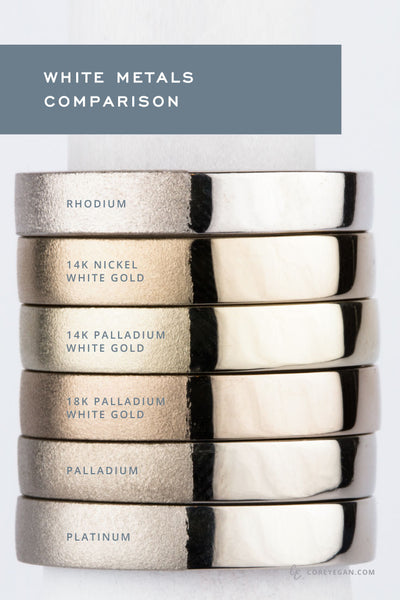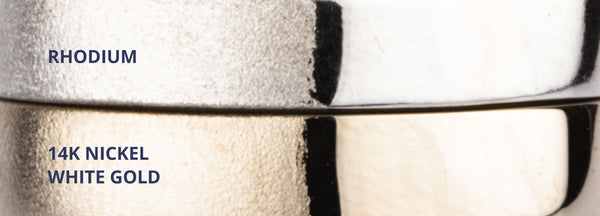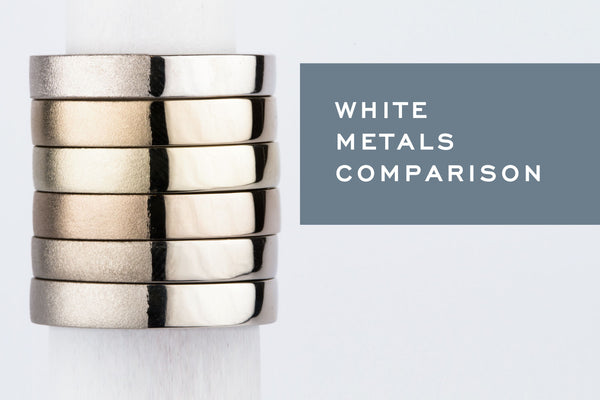
DECIDING WHICH WHITE METAL IS BEST FOR YOU BOILS DOWN TO THREE FACTORS: MAINTENANCE, DENSITY, AND PRICE.
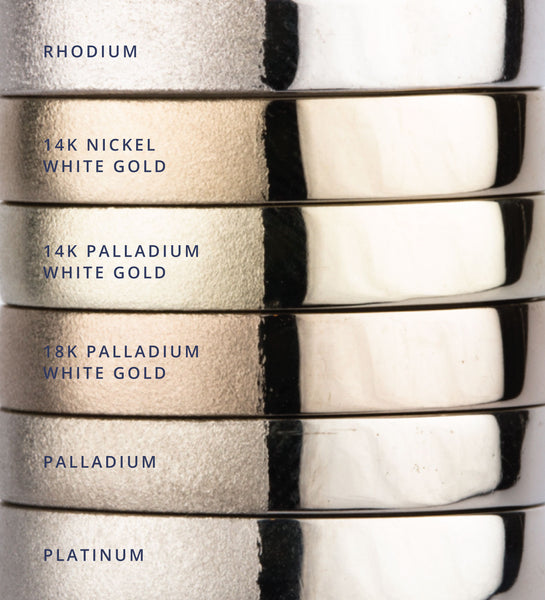
Three precious metals covered in my Guide to Precious Metals will be used in the following head-to-head matchups : White Gold, Platinum, and Palladium.
WHITE GOLD VS. PLATINUM
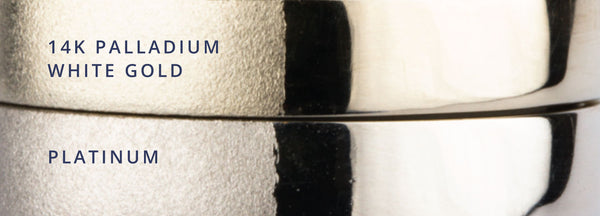
White gold jewelry typically has a lower price point than platinum. A large part of this price difference is due to the fact that platinum alloy used contains 95% platinum whereas a white gold ring will have 58.5% (14 karat) to 75% (18 karat) gold content. Platinum is also more dense, meaning a finished ring of the same size and shape weighs more.
Platinum is hypoallergenic and naturally more white in color than white gold. White gold can be rhodium plated to achieve a whiter finish, but that plating will require extra maintenance over time.
For a full description of each of these metals, please read my Guide to Precious Metals.
WHITE GOLD VS. PLATINUM |
||
|---|---|---|
WHITE GOLD |
PLATINUM |
|
LOWER PRICE |
✓ | |
PURITY |
58.5% - 75% pure gold | 90-95% pure platinum |
WHITEST COLOR |
✓ | |
HYPOALLERGENIC |
alloys containing Nickel are NOT hypoallergenic | ✓ |
MAINTENANCE |
may require rhodium plating every 2 years | high polished platinum will develop a worn patina over time |
 WHITE GOLD VS. PALLADIUM
WHITE GOLD VS. PALLADIUM
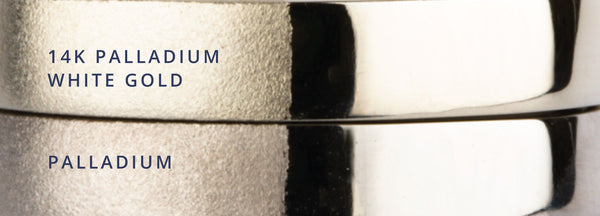
Like platinum, palladium is hypoallergenic and naturally more white in color than white gold. It is used in the same purity as well, 95% pure. Palladium is less dense than gold or platinum, making the finished ring feel very lightweight. It's also the most scratch resistant of the white metals.
The price of a finished ring in palladium typically falls between the price of a 14 karat gold ring and an 18 karat gold ring.
For a full description of each of these metals, please read my Guide to Precious Metals.
WHITE GOLD VS. PALLADIUM |
||
|---|---|---|
WHITE GOLD |
PALLADIUM |
|
LOWER PRICE |
✓ | |
PURITY |
58.5% - 75% pure gold | 90-95% pure palladium |
WHITEST COLOR |
✓ | |
HYPOALLERGENIC |
alloys containing Nickel are NOT hypoallergenic | ✓ |
MAINTENANCE |
may require rhodium plating every 2 years | more scratch resistant |
PALLADIUM VS. PLATINUM 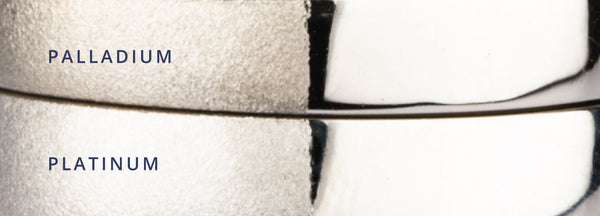
Palladium and platinum are both platinum family metals on the periodic table of elements. Both are used at 95% purity in their alloys, but since palladium is less dense the finished ring will weigh less. Both metals are hypoallergenic and have a naturally white color which requires no rhodium plating. Both metals are excellent for stone setting and holding gems in place.
Palladium's lighter weight and lower price tag are typical reasons one would choose palladium over platinum.
Platinum's rarity and significant weight are typical reasons one would choose platinum over palladium.
For a full description of each of these metals, please read my Guide to Precious Metals.
PALLADIUM VS. PLATINUM |
||
|---|---|---|
PALLADIUM |
PLATINUM |
|
LOWER PRICE |
✓ | |
PURITY |
90-95% pure platinum | 90-95% pure platinum |
WHITEST COLOR |
✓ | |
HYPOALLERGENIC |
✓ | ✓ |
MAINTENANCE |
more scratch resistant | high polished platinum will develop a worn patina over time |
RHODIUM PLATING
As discussed in my Precious Metals Comparison, many white gold alloys are rhodium plated.
Rhodium is a precious metal in its own right and a member of the platinum family on the periodic table of elements. Coating your white gold jewelry in rhodium gives the metal a bright white color, but this layer eventually wears off. This plating usually needs to be reapplied every 1 to 2 years, but depending on the wearer’s body chemistry and wearing habits it could be as frequently as every 6 months.
